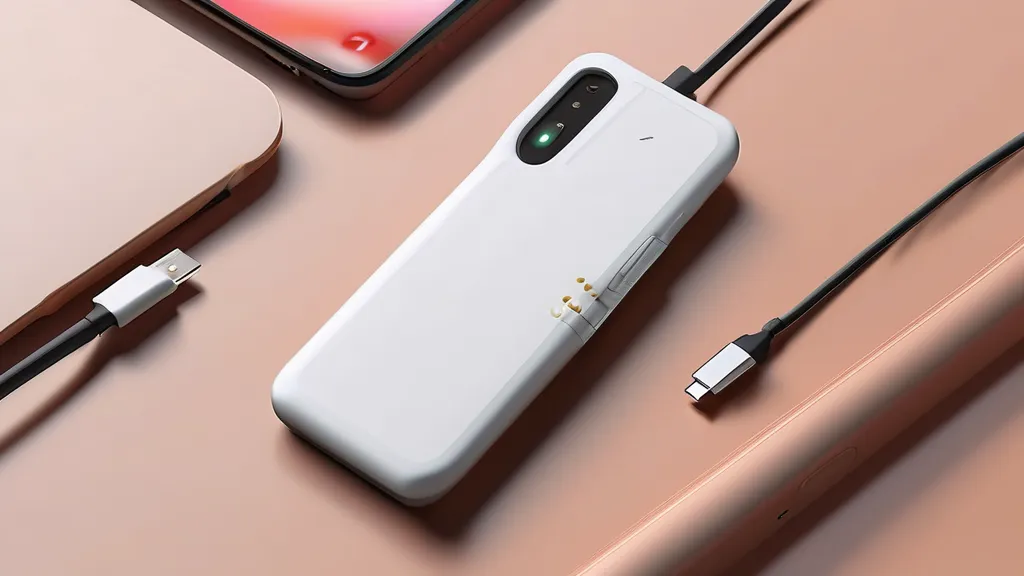The Future of Smartphone Connectivity: Embracing USB-C with Innovative Solutions
Bridging the Gap Between Legacy Devices and Modern Connectivity Standards

- Explore the rise of USB-C as a universal standard.
- Understand the challenges and benefits of transitioning to USB-C.
- Discover innovative solutions like USB-C protective cases.
- Consider diverse perspectives on the future of smartphone connectivity.
Introduction
In a world where technology evolves at a breakneck pace, the way we connect and charge our devices is undergoing a significant transformation. The shift from proprietary charging ports to universal standards like USB-C is more than just a technical change; it’s a paradigm shift that affects manufacturers, consumers, and the environment. As major companies like Apple transition their flagship products to USB-C, users are faced with the challenge of adapting existing devices. Enter innovative solutions like the new protective case that seamlessly integrates USB-C connectivity into older models, offering a bridge between the past and the future.
The Rise of USB-C: A Brief Overview
USB-C, or Universal Serial Bus Type-C, has rapidly become the standard for connectivity across a wide range of devices, from laptops and tablets to smartphones and peripherals. Its popularity stems from several advantages: it’s reversible, supports faster data transfer rates, and can deliver more power than its predecessors. According to a study by Grand View Research, the global USB-C market is expected to grow at a compound annual growth rate (CAGR) of 25% from 2021 to 2028, driven by increasing demand for fast-charging solutions and enhanced data transfer capabilities.
Why the Shift?
The shift to USB-C is driven by both consumer demand and regulatory pressure. In 2022, the European Union mandated that all new smartphones sold in the region must use USB-C by 2024, aiming to reduce electronic waste and simplify the charging process for consumers. This move is expected to save EU consumers approximately €250 million per year and reduce electronic waste by nearly 12,000 tonnes annually, according to the European Commission.
Challenges of Transitioning
While the transition to USB-C offers numerous benefits, it also presents challenges, particularly for users with older devices that lack this connectivity. Upgrading to a new phone just for a port change is not economically feasible for many, nor is it environmentally sustainable. This is where innovative solutions like the USB-C protective case come into play, offering users the ability to upgrade their connectivity without purchasing a new device.
Innovative Solutions: USB-C Protective Cases
The newly introduced protective case is a marvel of modern engineering, designed to retrofit older devices with USB-C capabilities. This Swiss-made case, constructed from robust dark gray Nylon 12 plastic, not only protects the device but also integrates USB-C functionality, allowing for fast charging, data transfers, and CarPlay compatibility. While it supports wireless and MagSafe charging, it does have limitations, such as the inability to power accessories that draw energy directly from the phone, due to restrictions enforced by Apple adapters.
Real-World Impact: Changing the Game
The impact of such solutions is multifaceted. For consumers, it means extending the life of their current devices, thereby saving money and reducing e-waste. For manufacturers, it presents an opportunity to innovate and offer new products that meet consumer needs in a rapidly changing market. According to a report by Statista, the average lifespan of a smartphone is now over 2.5 years, and solutions like these could further extend it by making older models more compatible with contemporary technology.
Diverse Perspectives
While the benefits of USB-C are clear, it’s essential to consider various viewpoints. Some argue that the transition might lead to short-term confusion and inconvenience as users adjust to new standards. Others point out the potential for increased costs associated with purchasing new accessories. However, proponents emphasize the long-term environmental and economic benefits, citing reduced e-waste and the convenience of a universal standard as compelling reasons for the shift.
Conclusion: Embracing Change
The transition to USB-C is indicative of a broader trend towards standardization and sustainability in technology. As consumers, we stand on the brink of a connectivity revolution, one that promises greater convenience and environmental responsibility. Innovative solutions like the USB-C protective case are not just stopgaps; they represent a forward-thinking approach to technological adaptation. As we move toward a future where USB-C is ubiquitous, the challenge will be to continue innovating in ways that respect both consumer needs and the planet.
Call to Action
What are your thoughts on the transition to USB-C? Do you see it as a necessary step towards a more sustainable future, or do you have concerns about the process? Share your thoughts in the comments below or join the conversation on social media. Let’s explore how we can navigate this change together.